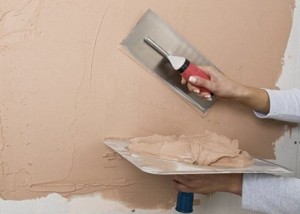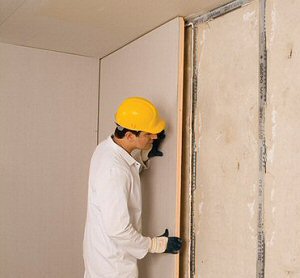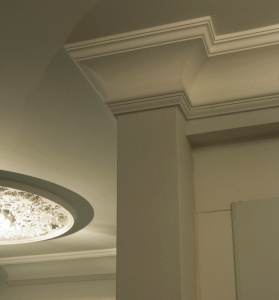Plastering
At T G Builders, we offer the following services when it comes to interior plastering:
- Bonding (Backing coat plaster)
- Skimming (finish coat plaster)
- Dry lining (plaster boarding)
- Coving and cornices (plaster moulds)
Bonding (backing coat plaster) is the method of skillfully using a specific type of wet plaster skill as a coat to the interior surfaces, a skill that our company has managed to acquire due to our large amount of experience gained in the construction industry.
Skimming it the method of applying a final finish coat on the initial backing coat plaster. The final coat or top coat of plaster (referred to as a skim) is probably the most important as it is the final coat that will clearly be seen once work on the property has finished. Skimming requires practice and patience when plastering a room.
Fig.1: Skim coat being applied to wall

Dry lining is the method of applying plasterboard to surfaces such as timber, masonry or metal using different fixings for each background. Dry lining is the most popular plastering method as it requires less skill than the bonding method when applying to an interior surface and there is no need to wait for the applied plaster to dry on the interior surface in comparison to the backing coat plaster where it is wet and takes time to dry.
Fig.2: dry lining technique being employed

Coving is a decorative mould that is fitted along the top edges between the walls and ceilings of a room. It is fitted using cove adhesive spread along the full length of the cove top and bottom.
Fig.3: Coving technique used on the corners of the wall

